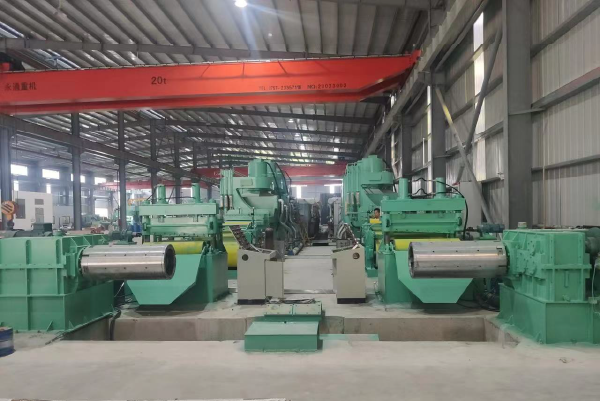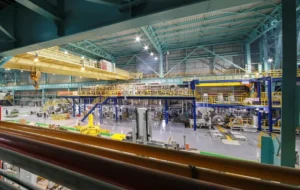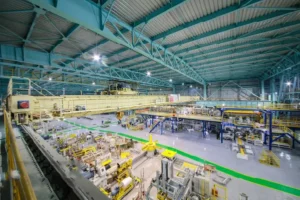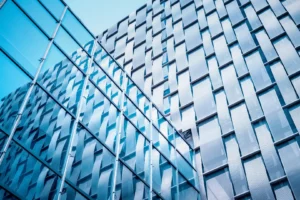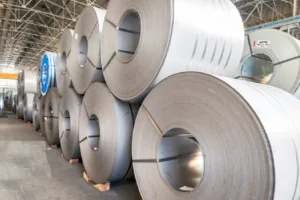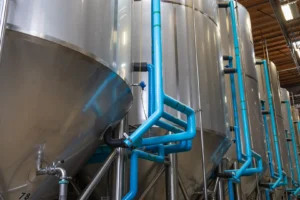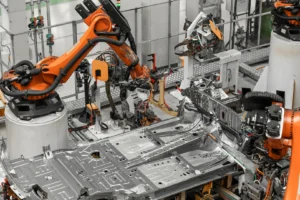Stainless Surface Finishes 2B / BA / No.4 Compared
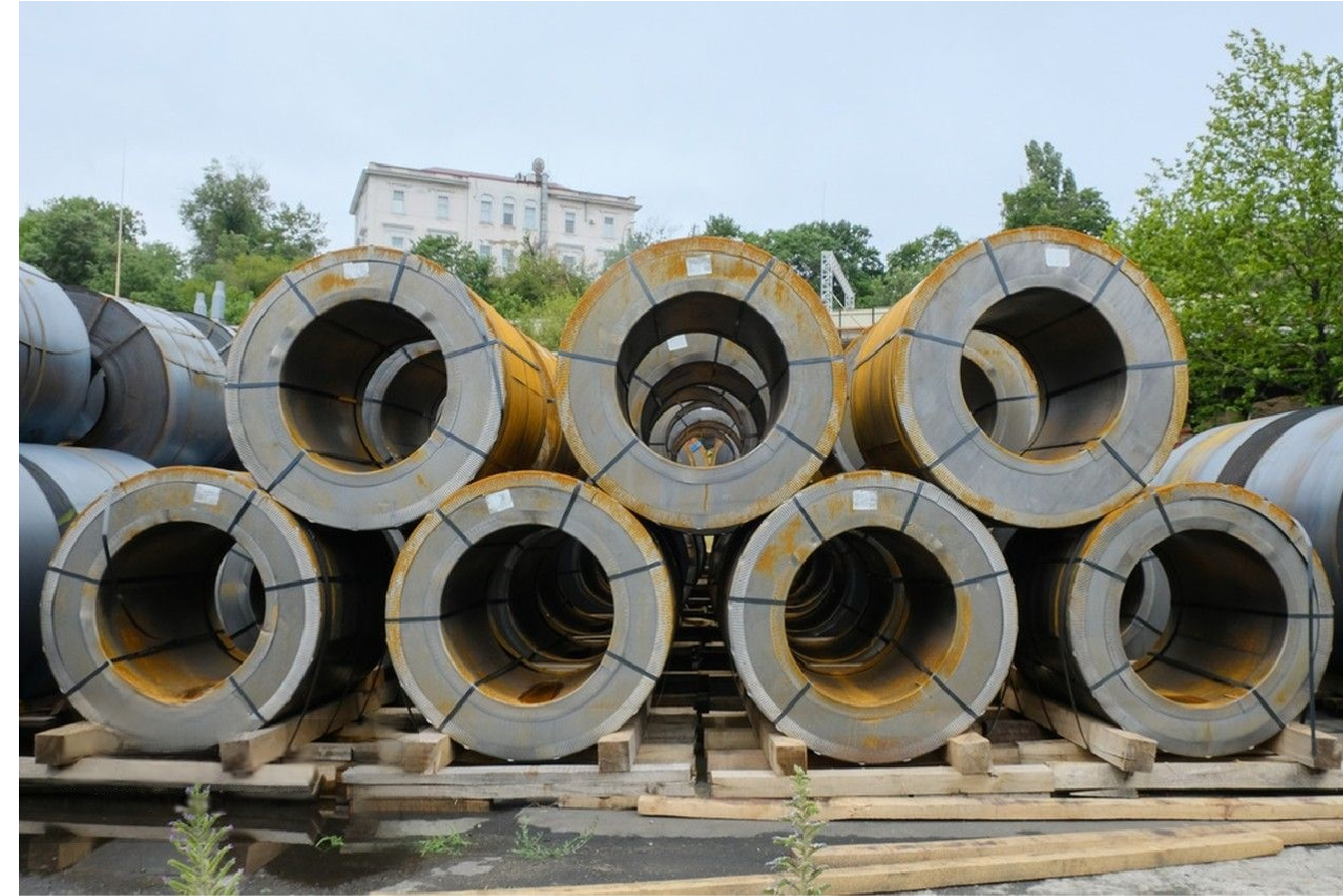
Navigating the world of stainless steel finishes can often feel overwhelming, with choices like 2B, BA, and No.4 presenting unique characteristics. Selecting the wrong one can lead to aesthetic disappointment or functional inadequacy for your project. As Global Business Director at MFY, I'm here to clarify these options.
Stainless steel surface finishes such as 2B, BA, and No.4 stainless steel finishes offer distinct visual appeal and practical properties. Understanding their differences is crucial for selecting the optimal finish for various applications, impacting both aesthetics and long-term performance.
Choosing the right stainless steel finish is more than just a matter of appearance; it's a critical decision that impacts durability, maintenance, and overall project cost. In my years at MFY, guiding clients from manufacturing to construction, I've seen firsthand how an informed choice at this stage can significantly enhance the final product's value and longevity. Let's delve into what makes each of these popular finishes unique.
The selection of a stainless steel finish is a nuanced process, often dictated by a blend of aesthetic desires, functional requirements, and budgetary constraints. For instance, the food processing industry might prioritize the hygienic, easily cleanable surface of a BA finish, while architectural applications may lean towards the sophisticated, fingerprint-resistant No.4 finish. At MFY, we often advise clients that the initial cost of a finish should be weighed against its lifecycle performance and maintenance needs. Data from industry reports, like those from the Specialty Steel Industry of North America (SSINA), often highlight how specific finishes perform under various corrosive environments or mechanical stresses, further guiding these critical decisions. Understanding these trade-offs is key to unlocking the full potential of stainless steel in your projects.
What are the characteristics of 2B stainless finish?
Are you finding it difficult to pinpoint a versatile, cost-effective stainless steel finish for your general-purpose applications? The myriad of options can be confusing, potentially leading to overspending on unnecessary specialized finishes. I often recommend clients first consider the 2B finish1 for its balance of properties.
The 2B stainless steel finish is a widely used, general-purpose cold-rolled finish known for its smooth, moderately reflective, and matte grey appearance. It's produced by annealing and pickling after cold rolling, followed by a light skin pass, making it a cost-effective and versatile option.
The 2B finish is arguably the most common and economical finish you'll encounter for stainless steel sheets and coils, and it's a staple in MFY's product offerings. Its unassuming appearance belies its incredible utility across a vast range of industries. Think of it as the workhorse of stainless steel finishes – not necessarily flashy, but exceptionally reliable and functional. The "2B" designation itself refers to the production process: it's cold-rolled, then softened (annealed) and descaled (pickled), and finally, it receives a light rolling pass on polished rolls (skin pass or pinch pass). This final step imparts a smoother, brighter surface than a 2D finish, though it's still distinctly matte compared to BA or polished finishes. Its reflectivity is diffuse, meaning it doesn't create sharp, mirror-like reflections, which can be advantageous in industrial settings to reduce glare. I've seen it specified for everything from large-scale industrial equipment where aesthetics are secondary to function, to internal components of machinery where its corrosion resistance and formability are paramount. For many of our manufacturing clients, particularly in India and Southeast Asia, the 2B finish on our stainless steel coils provides an excellent starting point for their own fabrication processes, as it can be easily cleaned, welded, and further processed if a different final look is desired.
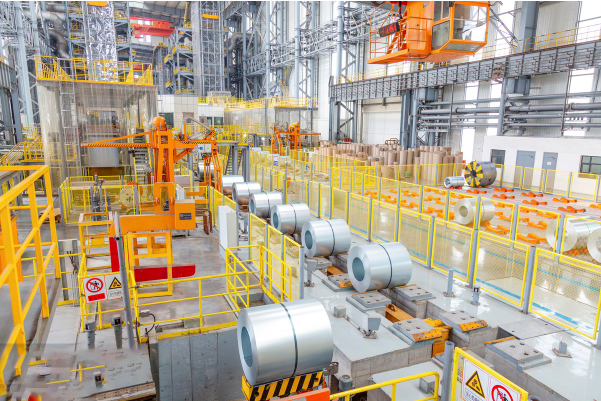
The 2B finish represents a cornerstone in the stainless steel market, not just for MFY but globally, due to its optimal balance of cost, performance, and versatility. Its production method is standardized and efficient, contributing to its widespread availability and affordability. When I discuss material options with clients, especially those in equipment manufacturing or general fabrication, the 2B often emerges as the default choice unless specific aesthetic or high-reflectivity requirements dictate otherwise. Its surface is smooth enough for many applications without additional polishing, offering good corrosion resistance inherent to the stainless steel grade itself. However, it's important to understand its limitations: it's not designed for high-end decorative purposes where a brilliant or patterned finish is desired. It can show fingerprints and smudges, and its matte appearance might not suit applications demanding a premium look. But for functional components, industrial tanks, chemical processing equipment, and even some food-grade applications where high polish isn't strictly necessary, 2B is an excellent, pragmatic choice. Many of our clients who purchase MFY stainless steel sheets and coils for subsequent processing, like stamping or deep drawing, find the 2B surface behaves predictably and reliably.
Understanding the "Mill Finish" Aspect of 2B
The term "mill finish" is often associated with 2B, and it essentially means that this is the standard surface supplied by the steel mill without extensive secondary polishing operations. For MFY, producing consistent 2B finish across our stainless steel coils and sheets is a core part of our cold-rolling processing capabilities. The process begins with hot-rolled stainless steel, which is then annealed and pickled before being cold-rolled to the desired thickness. This cold rolling work-hardens the steel. To restore ductility for further forming, the steel is then annealed again (softened by heating) and pickled (cleaned in an acid bath to remove scale). The crucial final step for a 2B finish is a light pass through polished rolls, known as a "skin pass" or "pinch pass." This doesn't significantly reduce the thickness but imparts a smoother, brighter, and more uniform surface than the duller 2D finish, which omits this final skin pass.
This skin pass is critical. According to data from various steel manufacturing handbooks, this final light rolling can improve flatness and surface consistency, making it more suitable for a wider array of applications. For instance, a client of ours in the automotive components sector in Russia relies on the consistent surface of MFY's 2B stainless steel for forming underbody parts. While not visible, the finish needs to be uniform to prevent issues during their stamping processes. The controlled nature of this mill finish ensures that fabricators receive a predictable starting material, reducing variability in their own manufacturing lines. It’s this predictability and cost-effectiveness that makes 2B the most widely specified stainless steel finish globally.
The practical implication for our clients, whether they are large manufacturing companies or smaller distributors, is that 2B provides a reliable baseline. It's clean, corrosion-resistant (depending on the grade, of course), and ready for use in many applications directly, or it can serve as an excellent substrate if further finishing, like painting or polishing to a No.4, is required. We've seen it used in everything from ductwork and enclosures to industrial kitchen backsplashes where a high-gloss finish isn't essential.
Corrosion Resistance and Cleanliness of 2B Finish
While the specific grade of stainless steel (e.g., 304, 316L) primarily dictates its inherent corrosion resistance, the surface finish can play a supporting role, particularly concerning cleanliness. The 2B finish, with its relatively smooth surface resulting from the skin pass, is less prone to trapping contaminants compared to rougher finishes. This makes it reasonably easy to clean, which is a significant advantage in applications like food processing equipment components (non-contact surfaces), chemical tanks, and pharmaceutical industry equipment. At MFY, we often supply 2B finished stainless steel sheets to equipment integrators who value this balance.
Industry studies, such as those published in the Journal of Food Protection, have compared the cleanability of various stainless steel finishes. While highly polished finishes often score best, 2B is generally considered acceptable for many environments where sterility is crucial but direct food contact might involve a more specialized finish. For example, a major client of MFY in Southeast Asia, a manufacturer of industrial refrigeration units, uses our 2B stainless steel sheets for internal shelving and paneling. They find it offers adequate corrosion resistance against condensation and is easy to maintain, without incurring the higher cost of a BA or No.4 finish for these non-critical aesthetic components.
It’s important to note, however, that while smooth, 2B is not impervious. In aggressive environments or where microscopic crevices can harbor bacteria, a more polished finish might be specified. But for a vast range of general industrial applications, including many in our export markets like India and the Middle East where robust and cost-effective solutions are prized, the cleanability and inherent corrosion resistance of 2B make it a highly practical choice. Our integrated supply chain ensures that the quality of the 2B finish is consistent, providing reliability to these clients.
Formability and Weldability with 2B Finish
One of the key advantages of the 2B finish, particularly for MFY's clients in manufacturing, is its excellent formability and weldability. The annealing process it undergoes ensures the stainless steel is in a soft, ductile state, making it suitable for various forming operations like bending, stamping, and deep drawing. The smooth, uniform surface provided by the skin pass also contributes to consistent results in these processes, reducing tool wear and improving the quality of the formed parts.
Many of our clients who purchase stainless steel coils from MFY for high-volume production of items like sinks, cookware components, or automotive parts rely on the consistent formability of our 2B finish. For instance, a large-scale cookware manufacturer in India shared that the predictability of our 2B material significantly reduces their rejection rates during deep drawing operations. This is a testament to the quality control in our cold-rolled processing. Welding, too, is generally straightforward with 2B finished stainless steel. The surface is clean and free from heavy oils or scale that might interfere with the welding process, although standard pre-welding cleaning is always recommended.
The heat tint or discoloration that occurs in the heat-affected zone during welding will be noticeable on the matte 2B surface. Post-weld cleaning and finishing, such as pickling or mechanical polishing, are often required if a uniform appearance is necessary in the welded area. However, for many structural or industrial applications where the weld appearance is not a primary aesthetic concern, the 2B finish performs admirably. Its versatility in fabrication is a major reason why MFY maintains strong production capacity and inventory for 2B finished products, ensuring rapid export delivery to our diverse client base.
2B is a cold-rolled finishTrue
The 2B finish is produced through cold rolling followed by annealing and pickling, making it a cold-rolled finish.
2B is highly reflectiveFalse
2B has a matte, moderately reflective surface, unlike BA finish which is highly reflective.
How does the BA finish differ from other stainless finishes?
Are you seeking a stainless steel finish that offers a brilliant, mirror-like appearance without the intensive labor of mechanical polishing? The BA finish might be your answer, but understanding its unique production and properties is key. It's a step up in reflectivity from 2B.
The BA (Bright Annealed) finish is distinguished by its highly reflective, mirror-like surface, achieved by annealing cold-rolled stainless steel in a controlled, oxygen-free atmosphere. This process prevents scaling and oxidation, preserving the steel's inherent brightness from the cold-rolling stage.
The Bright Annealed (BA) finish is where stainless steel truly begins to shine, quite literally. When I talk to clients about BA, I emphasize that its brilliance is achieved thermally, not mechanically like a No.8 mirror polish, which makes it distinct and often more cost-effective for achieving a high-gloss look. At MFY, we supply BA finished stainless steel coils and sheets to industries where aesthetics and cleanability are paramount. Think of high-end kitchen appliances, decorative architectural trim, or even automotive brightwork. The magic of the BA finish lies in its production: after cold rolling, the steel is annealed in a tightly controlled atmosphere, typically hydrogen or a blend of hydrogen and nitrogen, which prevents any oxidation or scaling from forming on the surface during the heating and cooling cycle. This means the smooth, bright surface achieved during the cold rolling process is preserved, resulting in a highly reflective, almost mirror-like appearance. It's significantly more reflective than a 2B finish2 and generally smoother. I recall a project with an equipment integrator in the Middle East who was developing a new line of premium commercial coffee machines; they selected MFY's BA finish for the exterior panels specifically for its sleek, modern look and ease of cleaning, which perfectly matched their brand's image. This choice helped them gain a competitive edge in a discerning market.
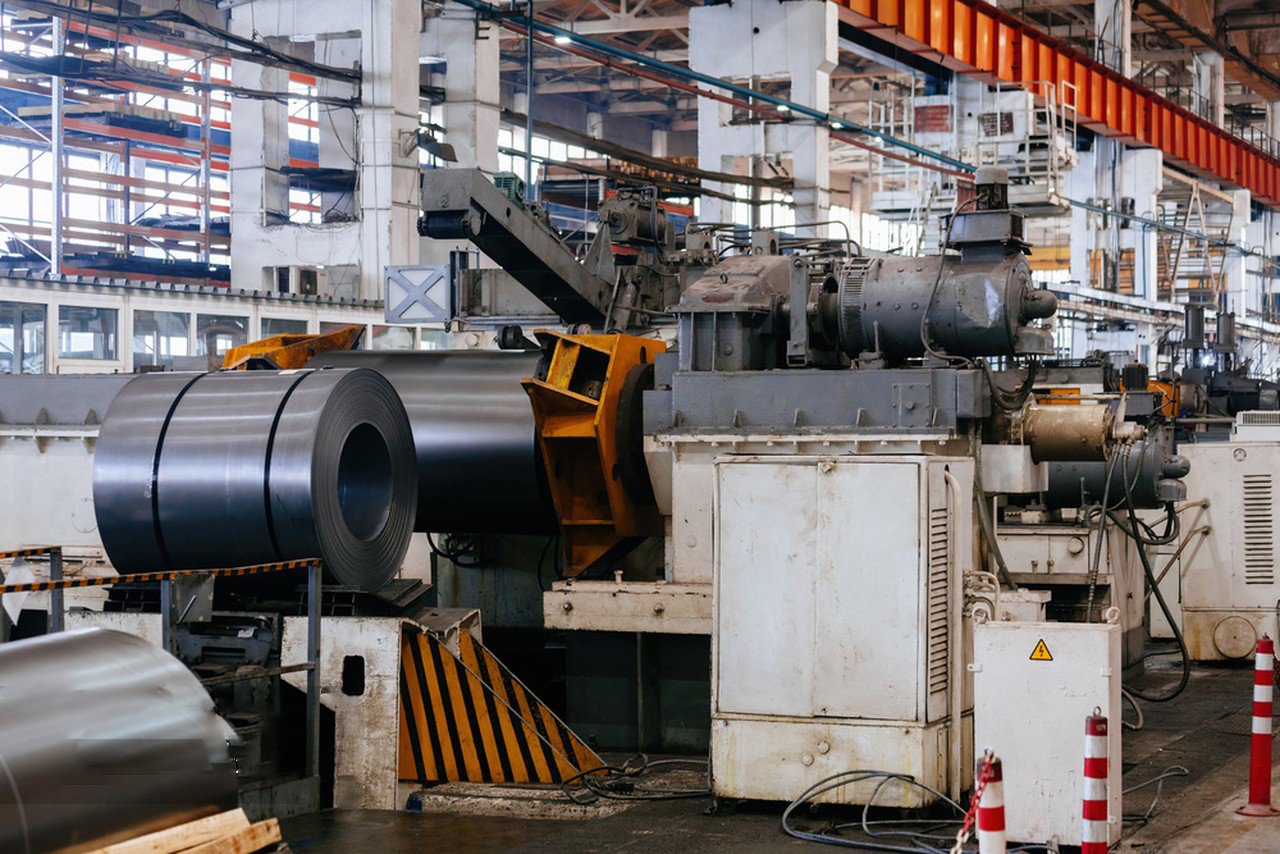
The BA finish stands out due to its unique combination of high reflectivity, smoothness, and the way it's produced. Unlike a No.8 mirror finish, which involves extensive grinding and buffing, the BA finish gets its sheen from the cold-rolling process itself, preserved through bright annealing. This often translates into a cost advantage when a highly reflective surface is desired but the absolute perfection of a No.8 mirror isn't necessary. From my experience at MFY, the BA finish is particularly popular among manufacturers of consumer goods and in architectural applications where visual appeal is a primary driver. For instance, clients in the appliance industry, from washing machines to toasters, frequently specify BA for its clean, modern aesthetic that implies quality and hygiene. The very smooth surface also offers practical benefits; it's less prone to adherence of dirt and contaminants and is generally easier to clean than matte or brushed finishes. We've supplied BA stainless steel pipes for decorative handrails and balustrades where their lustrous appearance adds a touch of elegance. However, it's important to note that BA finishes can show fingerprints and smudges more readily than, say, a No.4 brushed finish. Also, the level of "mirror" can vary slightly between producers and even batches, though standards are generally high.
The Science Behind Bright Annealing
The production of a BA finish is a more sophisticated process than that for a 2B finish, primarily due to the controlled atmosphere annealing. After the stainless steel is cold-rolled to its final thickness, which imparts a smooth and relatively bright surface, the key is to anneal it (to restore ductility) without allowing the surface to oxidize or scale. At MFY, our associated production facilities utilize advanced bright annealing lines where this process is meticulously controlled. The steel strip passes through a furnace filled with a protective atmosphere, typically pure dry hydrogen or a dissociated ammonia atmosphere (nitrogen and hydrogen). This oxygen-free environment prevents the formation of chromium oxides on the surface at elevated annealing temperatures (usually around 1050-1150°C for austenitic stainless steels).
As a result, the steel emerges from the annealing furnace with a surface that is as bright, or even brighter, than when it entered. No pickling (acid cleaning) is required after bright annealing because there's no scale to remove. This is a significant difference from 2B production, which requires pickling that slightly dulls the surface. According to metallurgical studies, the quality of the BA finish is highly dependent on the initial surface quality of the cold-rolled strip, the purity of the furnace atmosphere, and the precise control of temperature and strip speed. For example, a study in the Iron and Steel Technology journal highlighted that even trace amounts of oxygen or water vapor in the annealing atmosphere can tarnish the surface, reducing its reflectivity.
This process not only preserves but can even enhance the surface brightness. The highly reflective nature of BA makes it desirable for applications where aesthetic appeal is critical. I've worked with automotive parts manufacturers in our export markets who use BA stainless steel for decorative trim, relying on its consistent luster to meet stringent OEM standards. MFY's commitment to innovation-driven development includes ensuring our BA products meet these high expectations.
Reflectivity and Aesthetic Qualities of BA Finish
The hallmark of the BA finish is its high reflectivity, often described as "mirror-like," though it's typically not as distortion-free as a true No.8 super mirror polish, which involves mechanical polishing. The BA finish provides a bright, clean, and modern look that is highly sought after in many applications. Its distinct image clarity (DOI) is significantly higher than that of a 2B finish. For instance, measurements often show BA finishes having a gloss unit (GU) reading well above 500 at a 60-degree angle, whereas 2B might be in the 100-200 GU range. This makes BA an excellent choice for decorative panels, appliance facings, architectural accents, and even mirrors in less critical applications.
I recall a client, an engineering and construction contractor in Southeast Asia, who was working on a modern commercial building. They chose MFY's BA-finished stainless steel sheets for ceiling panels and column claddings in the main lobby. The BA finish helped create a sense of spaciousness and light due to its reflective properties, contributing to a striking contemporary design. While it does show fingerprints and smudges more readily than a textured or brushed finish, its smooth surface makes it relatively easy to clean with standard stainless steel cleaners.
However, the "mirror" quality can vary. Factors like the quality of the cold rolling, the specific annealing conditions, and even the steel grade can influence the final appearance. It's also worth noting that fabrication processes like welding or heavy forming can mar the BA finish, often requiring localized polishing or careful protection during manufacturing. Despite this, its aesthetic appeal, combined with the inherent corrosion resistance of stainless steel, makes BA a popular choice for value-added products.
BA Finish in Hygiene-Sensitive and Decorative Applications
The smoothness of the BA finish is a significant advantage in applications where hygiene and cleanability are critical, alongside aesthetics. The non-porous, highly polished surface offers fewer sites for bacteria to harbor and makes cleaning more effective. This is why BA-finished stainless steel is often found in food processing equipment (though sometimes specified with an additional light polish), pharmaceutical processing, and cleanroom environments. For example, MFY has supplied BA stainless steel sheets to manufacturers of commercial kitchen equipment and laboratory furniture who require surfaces that are both visually appealing and easy to sanitize.
A comparative study on bacterial adhesion to different stainless steel finishes, published by research institutions focusing on food safety, often indicates that smoother, more polished surfaces like BA exhibit lower bacterial retention after cleaning cycles compared to rougher finishes. While a No.8 mirror might be the ultimate in cleanability, BA offers a very good compromise, especially when cost is a factor. Its bright appearance also psychologically conveys cleanliness and modernity.
In purely decorative applications, BA provides a premium look. We've seen it used in everything from high-end retail displays and elevator interiors to automotive trim and artistic sculptures. Its ability to reflect light and surroundings can be used to great effect by designers. A distributor client of ours in the Middle East specifically stocks MFY's BA coils to cater to local demand for ornate architectural metalwork. The combination of brilliant shine and the durability of stainless steel makes it a compelling option over other reflective materials like chrome plating, which can be less durable.
BA finish is thermally achievedTrue
The BA finish's mirror-like appearance comes from controlled atmosphere annealing, not mechanical polishing.
BA is less reflective than 2BFalse
BA finish is significantly more reflective than 2B, with gloss units typically above 500 compared to 2B's 100-200 range.
What are the distinctive features of No.4 stainless finish?
Is finding a stainless steel finish that balances aesthetic appeal with practical durability and fingerprint resistance proving to be a challenge? The No.4 finish, with its characteristic brushed look, often strikes this perfect balance for many applications. It's a very popular choice for visible surfaces.
The No.4 stainless steel finish, also known as a brushed or satin finish, is distinguished by its uniform, directional grain created by polishing with fine abrasives. It offers a muted luster, effectively hides fingerprints and minor scratches, and is widely used for aesthetic applications.
The No.4 finish is perhaps one of the most recognizable and widely appreciated stainless steel finishes, especially in applications where the material is visible and subject to human contact. When I discuss options with clients like engineering and construction contractors or appliance manufacturers, the No.4 (often called brushed or satin) frequently comes up as a preferred choice for its elegant, yet practical, appearance. Unlike the matte 2B or the highly reflective BA, the No.4 has a distinctive, uni-directional grain created by mechanically abrading the surface with fine abrasive belts, typically in the 120-180 grit range, although finer grits (up to 320) can also be used for a smoother No.4 stainless steel surface finish with grit details3. This process imparts a soft, muted luster rather than a sharp reflection. One of its key advantages, and a reason for its popularity, is its ability to mask fingerprints, smudges, and minor scratches better than smoother finishes like BA. I remember a specific project with a manufacturer of commercial kitchen equipment in India; they switched to MFY's No.4 finished sheets for their refrigerator doors and worktops specifically because it maintained a cleaner look in busy kitchen environments compared to the BA finish they previously used.

The No.4 finish occupies a sweet spot in the stainless steel finish spectrum, offering a harmonious blend of aesthetic appeal, durability, and practicality. Its signature feature is the fine, parallel polishing lines that create a satin sheen with low reflectivity, effectively diffusing light. This "brushed" appearance is achieved by taking a base finish, often 2B, and then processing it through a series of abrasive belts or wheels. The grit of these abrasives (commonly 150-180, but can vary) determines the roughness and appearance of the final grain. At MFY, we ensure our No.4 finished stainless steel sheets and coils have a consistent grain direction and depth, which is crucial for projects where multiple panels are installed side-by-side, as mismatched grains can be visually jarring importance of consistent grain direction in stainless steel4. This finish is a workhorse in architectural applications, such as wall panels, elevator doors, and kick plates, as well as in a vast array of appliances like sinks, cooktops, and range hoods. The reason for its widespread adoption by our target clients, from manufacturing companies to construction contractors, is its forgiving nature – it doesn't shout for attention like a BA finish but provides a sophisticated, modern look that wears well over time.
The Production Process and Resulting Texture of No.4
The creation of a No.4 finish is a mechanical process, distinguishing it from the as-rolled 2B or the thermally treated BA finish. Typically, a stainless steel sheet or coil with a 2B mill finish serves as the starting point. This material is then passed under abrasive belts or brushes. The grit size of these abrasives is a critical parameter: coarser grits (e.g., 80-120) will produce a more pronounced, rougher grain (sometimes referred to as a No.3 finish), while finer grits (e.g., 150-240, or even up to 320) create the smoother, more refined lines characteristic of a No.4 finish. At MFY, our processing partners utilize precisely controlled polishing lines to ensure consistency in the grain depth and direction across the entire surface of our stainless steel sheets and coils.
The result is a surface with a distinct, uni-directional "lay" or grain. This texture is key to its aesthetic and functional properties. According to industry finishing standards, like those outlined in ASTM A480, the No.4 finish should have a "uniform, directional polished finish." The "effective" roughness (Ra value) for a typical No.4 finish might range from 0.4 to 0.8 micrometers, depending on the exact grit used and polishing parameters. This controlled roughness is what helps to diffuse reflections and mask minor imperfections.
I've worked with numerous clients, particularly in the architectural sector in markets like the Middle East, who have very specific requirements for the consistency of the No.4 grain, especially for large cladding projects. Any variation in the grain pattern or depth from one sheet to another can be highly noticeable. This is where MFY’s strong production capacity and quality control play a vital role in delivering materials that meet these exacting standards, ensuring a seamless and high-quality final installation for the construction contractors we serve.
Aesthetic Appeal and Practical Benefits (Hiding Wear)
The No.4 finish is highly favored for its aesthetic versatility. It provides a clean, modern, and sophisticated look that complements a wide range of design styles, from industrial to contemporary. Its muted sheen is less ostentatious than a BA or mirror polish, making it suitable for applications where a subtle yet high-quality metallic appearance is desired. This is why it's a staple in kitchen appliances, architectural trim, elevator panels, and food service equipment. At MFY, we see consistent demand for No.4 finished stainless steel from manufacturers who want their products to look good and maintain that appearance over time.
One of the most significant practical benefits of the No.4 finish is its ability to hide fingerprints, smudges, and minor scratches. The directional grain helps to break up the surface visually, making these common marks less conspicuous than on smoother, more reflective finishes like BA or even 2B. This "forgiving" nature reduces the perceived maintenance burden and keeps surfaces looking cleaner for longer, which is a major selling point. For example, a manufacturer of commercial refrigerators, one of MFY's clients, specifically uses our No.4 finish for exterior panels because it stands up well to the daily wear and tear in busy commercial environments, from restaurants to supermarkets.
Data from material comparison studies often highlight the No.4 finish as having a good balance between aesthetic appeal and resistance to visible marring. While it can still be scratched, the existing grain pattern makes new, minor scratches less obvious. This durability in appearance makes it a cost-effective choice in the long run for high-touch surfaces, contributing to its popularity across our diverse export markets.
Considerations for Fabrication and Grain Matching
While the No.4 finish offers many advantages, there are important considerations during fabrication, primarily related to its directional grain. When cutting, bending, or welding No.4 finished stainless steel, careful attention must be paid to maintaining grain consistency and direction. For instance, if multiple sheets are used to clad a large surface, it's crucial that the grain direction is aligned on all panels to avoid a "checkerboard" or mismatched appearance. At MFY, we often advise our clients, especially distributors and traders who supply to fabricators, to emphasize this point.
Welding No.4 finished stainless steel will inevitably disrupt the grain pattern in the heat-affected zone. Post-weld finishing is almost always required if a seamless appearance is necessary. This typically involves grinding the weld smooth and then re-establishing the No.4 grain using specialized hand tools or abrasives. This can be a labor-intensive process requiring skilled operators. I recall a project with an engineering contractor building custom stainless steel range hoods; achieving a perfect grain match after welding complex corner joints was their biggest challenge, underscoring the need for careful planning and skilled craftsmanship.
Furthermore, when forming No.4 finished material, it's important to protect the surface from scratches or damage from tooling, as these can be difficult to repair without affecting the surrounding grain. Using protective films during fabrication is a common practice. Despite these considerations, the overall appeal and practicality of the No.4 finish mean it remains a dominant choice. MFY’s ability to provide consistent No.4 finished coils and sheets, often with protective films, helps our manufacturing clients streamline their production processes and achieve high-quality end products.
No.4 finish hides fingerprintsTrue
The directional grain pattern of No.4 finish effectively masks fingerprints and minor scratches, making it ideal for high-touch surfaces.
No.4 is mirror-likeFalse
No.4 finish has a muted satin sheen, unlike mirror-like BA finish - its roughness (0.4-0.8μm Ra) diffuses reflections.
How do these stainless finishes compare in terms of application and aesthetics?
Struggling to visualize how 2B, BA, and No.4 finishes5 actually look and perform side-by-side for your project? Choosing incorrectly can mean a mismatch between design intent and reality. I often guide clients through this comparison to ensure their vision is met.
2B, BA, and No.4 stainless steel finishes differ significantly in aesthetics and typical applications: 2B is matte and industrial; BA is highly reflective and decorative; No.4 offers a brushed satin look, balancing aesthetics with practicality by hiding wear and fingerprints effectively.
When I'm helping clients at MFY decide on the right stainless steel finish, the conversation inevitably turns to a direct comparison of aesthetics and suitable applications for 2B, BA, and No.4. It's not just about how they look individually, but how they stack up against each other in the context of a specific project. A 2B finish, with its smooth, diffuse matte appearance, is the workhorse – excellent for industrial equipment, internal components, or as a base for further polishing. It’s functional and cost-effective. Then you have the BA (Bright Annealed) finish, which is all about brilliance and reflectivity; it’s chosen for its mirror-like gleam in applications like high-end appliances, decorative trim, and reflectors. Finally, the No.4 (brushed/satin) finish offers a sophisticated compromise – its directional grain provides a contemporary aesthetic that’s excellent at masking fingerprints and minor wear, making it ideal for kitchen appliances, architectural panels, and high-touch surfaces. I often tell clients, particularly manufacturing companies, to consider the end-user environment: a BA finish might look stunning in a showroom but could be a maintenance challenge in a busy public space where a No.4 would excel.
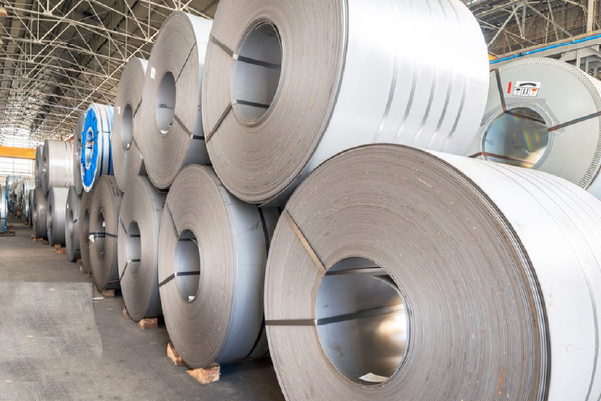
Comparing 2B, BA, and No.4 stainless steel finishes effectively requires looking at them through the dual lenses of visual appeal and functional suitability for various environments. Each finish, a product of distinct manufacturing processes, carries its own set of characteristics that make it ideal for certain applications and less so for others. As the Global Business Director at MFY, I've guided countless clients – from large-scale manufacturing companies to intricate engineering and construction contractors – through this selection process. The 2B finish surface 6, a cold-rolled, annealed, pickled, and skin-passed surface, is the most economical and widely used general-purpose finish. Its appearance is smooth with a matte grey, slightly reflective quality. It doesn't aim for high visual impact but offers excellent formability and a good base for further processing. Contrast this with the BA (Bright Annealed) finish, which is produced by annealing in a controlled, oxygen-free atmosphere. This results in a highly reflective, mirror-like surface that retains the brightness of the cold-rolled steel. It's chosen where a brilliant, clean look is paramount. The No.4 finish, often called brushed or satin, is created by mechanically polishing the surface with fine abrasives to produce a uni-directional grain. This gives it a distinctive, modern aesthetic with a muted luster that is very effective at hiding fingerprints and minor scratches. The choice often comes down to balancing cost, desired look, and the practical demands of the application environment, a common discussion point with our clients across India, Southeast Asia, and the Middle East.
Visual Characteristics: Reflectivity, Texture, and Color
The most immediate difference among 2B, BA, and No.4 finishes lies in their visual presentation, primarily dictated by reflectivity and surface texture. The 2B finish has the lowest reflectivity of the three, presenting a somewhat dull, matte grey appearance. Its surface is smooth to the touch but lacks the luster of BA or the defined texture of No.4. Its color is the natural silver-grey of stainless steel. In my experience at MFY, while 2B is not chosen for its beauty, its unobtrusive look is perfectly acceptable for a vast range of industrial and functional parts where aesthetics are secondary. For instance, internal components of machinery or industrial tankage often utilize 2B.
The BA finish sits at the opposite end of the reflectivity spectrum. It boasts a bright, highly reflective, mirror-like surface. The texture is exceptionally smooth, contributing to its high gloss. Colors reflected in a BA surface are generally true, though the inherent grey of the stainless steel subtly underlies the reflection. This makes it ideal for decorative applications, kitchenware, and architectural elements where a striking, polished look is desired. I recall a client in the high-end appliance sector who switched from a polished aluminum to MFY's BA stainless steel for trim components purely for the superior, lasting brilliance and perceived quality.
The No.4 finish offers a middle ground. Its reflectivity is significantly lower than BA, presenting a soft, satin sheen rather than a sharp mirror image. The defining feature is its uni-directional brushed texture, which consists of fine, parallel lines. This texture can vary from a coarser to a finer grain depending on the abrasives used. The color is still the characteristic silver-grey, but the brushed texture gives it a more contemporary, technical look. This finish is a favorite for architectural panels, elevators, and kitchen appliances precisely because its textured luster is both attractive and practical. Industry data on gloss units (GU) often quantifies these differences: 2B might be around 100-200 GU, No.4 around 150-300 GU (depending on the specific polish), while BA can exceed 600 GU.
Typical Applications and Industry Preferences
The distinct aesthetic and functional properties of 2B, BA, and No.4 finishes naturally lead them to different primary applications, reflecting industry preferences.
The 2B finish, being the most economical and versatile mill finish, finds extensive use in industrial equipment, chemical processing tanks, plumbing fixtures, automotive components (non-aesthetic), and as a base material for further polishing or coating. At MFY, a significant volume of our stainless steel coil and sheet exports to manufacturing companies in markets like India and Russia are 2B finish, destined for a wide array of functional applications. For example, a major client manufacturing industrial ducting systems relies on the cost-effectiveness and good formability of our 2B stainless steel.
BA finish is preferred where high reflectivity, a clean appearance, and good corrosion resistance are desired. Common applications include domestic appliances (refrigerator doors, washing machine drums), cookware, cutlery, surgical instruments, automotive trim, mirrors (in non-critical applications), and decorative architectural elements. We've seen a growing demand for BA from equipment integrators in Southeast Asia who are producing high-end food service and medical equipment, where the bright, easily cleanable surface is a key selling point. Its "hygienic" look is often a strong driver.
The No.4 finish is arguably the most popular for visible architectural applications and consumer appliances due to its aesthetic appeal and practicality. It's widely used for kitchen sinks, range hoods, refrigerator panels, elevator doors and interiors, building facades, handrails, and food service equipment. The ability of the No.4 finish to mask fingerprints and minor wear makes it a favorite for high-touch surfaces. Many of MFY's construction contractor clients in the Middle East specify No.4 for interior and exterior cladding due to its sophisticated look and durability in public spaces. The following table summarizes these common applications:
| Finish | Key Aesthetic | Common Applications | Typical MFY Client Sectors |
|---|---|---|---|
| 2B | Matte, smooth, diffuse | Industrial equipment, chemical tanks, automotive parts (non-visible), food processing | Manufacturing, Industrial |
| BA | Bright, mirror-like, reflective | Appliances, cookware, decorative trim, medical devices, architectural accents | Appliance Mfg, Equipment Integrators |
| No.4 | Brushed, satin, directional | Kitchen appliances, sinks, elevators, architectural panels, food service equipment | Construction, Appliance Mfg, Food Service |
This table provides a snapshot, but often, the choice is more nuanced, involving considerations of cost, specific environmental conditions, and the desired level of maintenance.
Durability, Maintenance, and Cost Considerations
When comparing these finishes, durability, maintenance, and cost are critical factors that I always discuss with MFY clients. While the inherent corrosion resistance is primarily determined by the stainless steel grade (e.g., 304, 316), the finish can influence how the material withstands wear and how easy it is to maintain.
In terms of visible wear, the No.4 finish generally performs best. Its brushed texture is excellent at concealing minor scratches, scuffs, and fingerprints, making it look newer for longer in high-traffic or high-touch areas. Maintenance typically involves cleaning with the grain using standard stainless steel cleaners. BA finish, while beautiful, is the most susceptible to showing fingerprints, smudges, and scratches due to its high reflectivity and smoothness. It requires more frequent cleaning to maintain its pristine appearance, though its smoothness does make it easy to wipe down. The 2B finish falls in between; it can show smudges but is less prone to highlighting minor scratches than BA due to its matte surface. It's generally robust and easy to clean for industrial purposes.
Cost-wise, 2B is typically the least expensive as it's a standard mill finish requiring less processing. The No.4 finish involves an additional mechanical polishing step, so it is more expensive than 2B. The BA finish, requiring specialized bright annealing in a controlled atmosphere, can also be more costly than 2B, often comparable to or sometimes slightly less or more than No.4, depending on the mill and market conditions. For example, data from various steel price indexes usually show a premium of 10-25% for No.4 or BA over 2B, though this can fluctuate.
I always advise clients to consider the total lifecycle cost. While a BA finish might have a higher initial cost or require more maintenance effort, its aesthetic impact might be crucial for a luxury product. Conversely, for an industrial component, the cost-effectiveness and functionality of 2B are unbeatable. MFY's fully integrated supply chain allows us to offer competitive pricing across these finishes, and our rapid export delivery ensures projects stay on schedule, regardless of the chosen finish.
No.4 hides fingerprints bestTrue
The brushed texture of No.4 finish effectively conceals fingerprints and minor wear, making it ideal for high-touch surfaces.
2B is the most expensiveFalse
2B is actually the most economical finish as it's a standard mill finish requiring less processing than BA or No.4.
Which stainless finish should you choose for your specific project needs?
Feeling uncertain about which stainless steel finish – 2B, BA, or No.4 – is the definitive best choice for your upcoming project? Making the optimal selection ensures your project meets both aesthetic goals and functional requirements without overspending. Let me help you narrow it down.
To choose the right stainless steel finish, assess your project's primary needs: 2B for cost-effective functionality, BA for high-gloss decorative appeal and hygiene, or No.4 for a balance of sophisticated aesthetics, durability, and ease of maintenance in visible applications.
Selecting the ideal stainless steel finish from options like 2B, BA, and No.4 is a critical decision that hinges on a careful evaluation of your project's specific requirements. There's no single "best" finish; the optimal choice is always context-dependent. As Global Business Director at MFY, I routinely guide clients through this by asking a series of questions: What is the primary function of the stainless steel component? What is the desired aesthetic? What is the exposure environment? What is the budget? For example, if you're a manufacturing company producing internal parts for industrial machinery, the cost-effectiveness and good formability of 2B will likely be paramount. If you're an engineering contractor designing a high-end hotel lobby, the reflective brilliance of BA or the sophisticated satin of No.4 will be key considerations. And if you're an equipment integrator for commercial kitchens, the balance of hygiene, durability, and appearance offered by No.4 or BA will be crucial. Understanding these trade-offs is where my team and I at MFY can provide significant value, leveraging our experience across diverse markets and applications.

Choosing the right stainless steel finish—be it 2B, BA, or No.4—is a crucial step that directly impacts not only the visual success of your project but also its long-term performance and maintenance profile. This decision should be a thoughtful process, weighing various factors from aesthetic aspirations to practical demands and budgetary realities. At MFY, with our extensive experience across global markets like India, Southeast Asia, and the Middle East, and serving diverse clients from manufacturing companies to engineering and construction contractors, we've seen how a well-chosen finish contributes significantly to project success. The key is to systematically analyze your specific needs. Are you looking for a purely functional, cost-effective solution where appearance is secondary? Or does the application demand a high-gloss, premium look? Perhaps you need a finish that offers a sophisticated aesthetic while also being robust enough to handle daily wear and tear in a public or commercial setting. Each finish—2B with its utilitarian matte surface, BA with its brilliant reflectivity, and No.4 with its elegant brushed texture—offers a unique value proposition. By breaking down your project requirements and aligning them with the distinct characteristics of each finish, you can make an informed choice that delivers both satisfaction and value.
Assessing Functional Requirements: Durability, Hygiene, and Formability
The first step in selecting a finish is to clearly define the functional demands of your application. Consider durability: will the surface be exposed to heavy wear, potential scratches, or impacts? If so, a No.4 finish, with its ability to mask minor damage, might be more suitable than a BA finish, which can highlight imperfections. For applications where the component is hidden or protected, the robust nature of a 2B finish might be perfectly adequate. I recall a client, an equipment integrator, who initially wanted BA for some machine guarding. After discussing the likelihood of scuffs and the non-aesthetic nature of the part, they opted for 2B, saving costs without compromising function.
Hygiene is another critical factor, especially for food processing, medical, or pharmaceutical applications. BA finishes, with their extremely smooth and non-porous surfaces, are excellent for cleanability and minimizing bacterial adhesion. A No.4 finish can also be very hygienic if properly maintained, though its microscopic grooves require thorough cleaning. 2B, while smooth, is generally not preferred for direct food contact zones where high polish is specified, but it's often used for surrounding structures and enclosures. Research by food safety organizations consistently shows that smoother finishes correlate with better cleanability. For instance, studies might compare colony-forming units (CFUs) on different surfaces after standardized cleaning protocols, often favoring highly polished or BA surfaces.
Formability is also a key consideration for manufacturing companies. If the stainless steel needs to undergo significant bending, stamping, or deep drawing, the 2B finish is an excellent choice as it is typically supplied in a highly ductile state. BA finishes are also generally formable, but care must be taken to protect the bright surface during these operations. No.4 finished material can be formed, but the directional grain might stretch or distort, potentially requiring refinishing in the formed areas. MFY’s technical team often consults with clients on the best finish for complex forming operations, considering our stainless steel coil and sheet properties.
Matching Aesthetics to Design Intent and Environment
Once functional needs are addressed, aesthetic considerations come to the forefront. What is the overall design language of your project? Are you aiming for an industrial, minimalist, luxurious, or contemporary look? The 2B finish, with its utilitarian matte appearance, suits industrial settings or components where aesthetics are not a priority. It doesn't draw attention to itself. For projects demanding a "wow" factor, high shine, and a modern, sleek appearance, the BA finish is a strong contender. Its mirror-like reflectivity can make spaces appear larger and brighter. I've seen it used to great effect in high-end retail displays and architectural accents by design-focused clients.
The No.4 finish offers a versatile aesthetic that bridges the gap. Its satin, brushed look is contemporary and sophisticated, fitting well into a wide range of designs from commercial kitchens to upscale office interiors and building facades. It provides a metallic warmth and texture that BA lacks, and a more refined appearance than 2B. The directional grain can also be used as a design element. For example, a construction contractor client in Dubai used MFY's No.4 finished sheets with alternating grain directions for a feature wall, creating a subtle yet dynamic visual effect.
The environment in which the stainless steel will be placed also influences aesthetic choices. A BA finish might be stunning in a controlled indoor environment but could be problematic outdoors or in high-traffic areas due to its susceptibility to showing smudges and water spots, and potential for glare. No.4 is often preferred for such applications due to its more forgiving surface. Consider the lighting conditions as well; highly reflective finishes can create glare under direct, bright light.
Balancing Cost, Lead Times, and Long-Term Value
Finally, practical considerations like cost, availability, and long-term value must be factored into your decision. As a general rule, 2B is the most cost-effective finish. No.4 and BA finishes involve additional processing steps and are therefore more expensive. The price premium can vary based on market conditions, the specific grade of stainless steel, and the quantity ordered, but it's a significant factor for many projects. At MFY, our integrated supply chain and strong production capacity help us offer competitive pricing and rapid export delivery for all these finishes, but the inherent cost differences in production remain.
Lead times can also differ. Standard 2B finished material is often more readily available from stock. BA and No.4 finishes, especially for larger quantities or specific dimensions, might have longer lead times due to the specialized processing involved. This is an important discussion point when planning project timelines, and MFY works closely with clients to meet their delivery schedules.
Beyond the initial cost, consider the long-term value. A slightly more expensive finish like No.4 might save money in the long run due to lower maintenance needs (less frequent cleaning, better at hiding wear) compared to a BA finish in a high-traffic area. Conversely, the premium aesthetic of a BA finish might directly contribute to the perceived value and marketability of a high-end product, justifying its cost. I always encourage clients to look at the total cost of ownership, not just the upfront material price. For instance, a distributor might find that stocking No.4 and BA, despite higher initial costs, meets the demands of their clients for value-added products, leading to better overall business. Choosing the right finish is an investment, and MFY is committed to helping you make the most informed one.
2B is cost-effectiveTrue
2B finish is the most economical option among the three, making it ideal for functional applications where aesthetics are secondary.
BA is best for outdoor useFalse
BA finish is highly reflective and prone to showing smudges and water spots, making it less suitable for outdoor or high-traffic areas compared to No.4.
Conclusion
Choosing between 2B, BA, and No.4 stainless steel finishes depends on your project's specific aesthetic, functional, and budgetary needs. Understanding their unique characteristics, from 2B's utility to BA's brilliance and No.4's balanced appeal, ensures an optimal material selection with MFY's support.
-
Learn how the 2B stainless steel finish is produced and its properties ↩
-
Discover differences between 2B and BA finishes regarding reflectivity and production methods. ↩
-
Learn how different grit sizes impact the appearance and quality of the stainless steel finish ↩
-
Understand the significance of grain consistency for visual harmony in installations ↩
-
Learn about how each finish affects appearance and usage in industrial and decorative applications. ↩
-
Understand the production process and characteristics of the 2B finish texture. ↩
Have Questions or Need More Information?
Get in touch with us for personalized assistance and expert advice.
